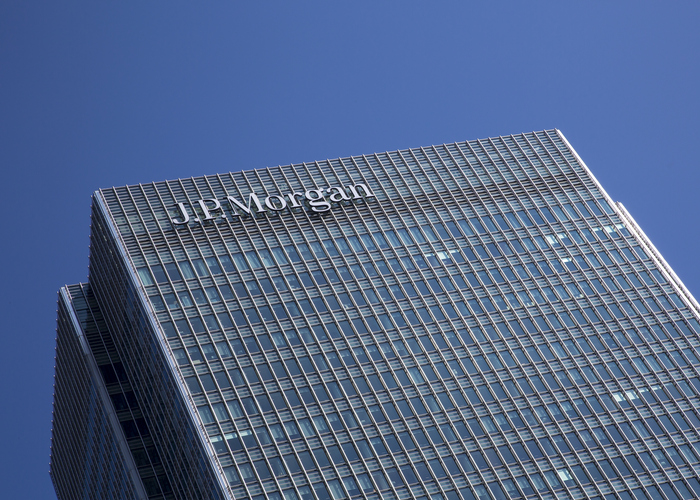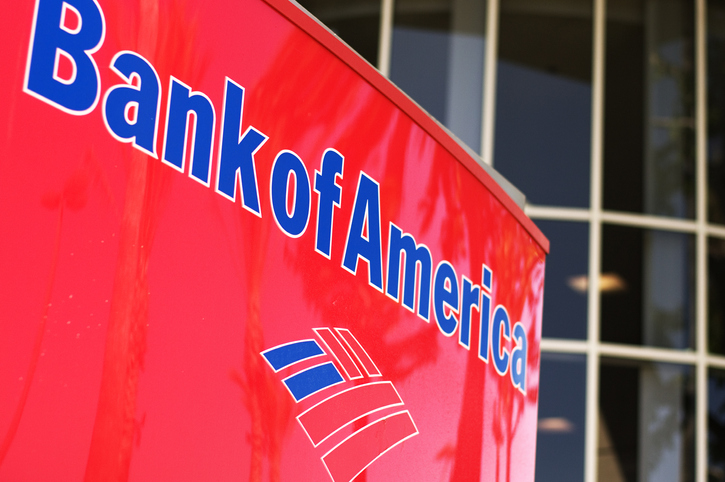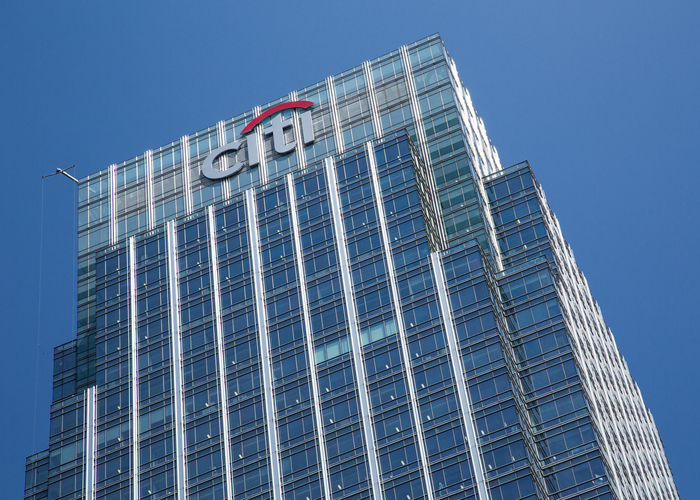Stockwatch: what do bumper US bank results mean for the UK?
There’s reason for optimism, but much depends on the success of the vaccine roll-out.
16th April 2021 17:25
by Edmond Jackson from interactive investor
There’s reason for optimism, but much depends on the success of the vaccine roll-out.

A general rise in US bank stocks this year appears confirmed by blow-out first quarter results this last week. Two CEOs are especially bullish on the US economy, as if to vindicate stocks riding high generally. But how reliable is all this, and what possible follow-through for UK-listed banks?
Bank stocks do typically lead the market
Demand for loans is often a forward indicator of the wider economy, but this time around there has been exceptional monetary and fiscal stimulus. While some households have suffered during Covid-19, others are better off. In the UK, observe how personal credit card debt is paid down to record low levels, and home improvement outlets such as B&Q also kitchen/bathroom fitter Norcros (LSE:NXR) are enjoying bumper earnings.
In the US, retail sales jumped nearly 10% last month with households receiving $1,400 (£1,016) fiscal stimulus cheques. A sense of US recovery is supported by way of unemployment registrations down 25% to 769,000 in the second week of April.
I still suspect the banks’ first quarter results need broadly adjusting for a vast tide of digital money.
Reserving – then releasing those reserves – means a massive distortion
A year ago, banks established huge provisions anticipating a tide of sour loans. But monetary and fiscal stimulus has stemmed them, consequently banks are swiftly writing back these provisions – classed as “reserves” – through their income statements. It makes for whopping like-for-like, first-quarter contrasts.
Mind, a boost is happening to net profit and earnings per share. This is due to “operational gearing” of financial firms, where revenue changes are greater than costs, which magnifies profits.
US banks’ ‘investment side’ boosted
Versus UK banks, the big US names have greater exposure to trading activity and equity issuance. That has soared after monetary stimulus created risk capital seeking a home, and raised risk appetite generally.
A key question is whether such “investment” has primed the underlying economy or chiefly been speculation. Witness the boom in special-purpose acquisition companies or SPACs, which appear largely to explain the banks’ big fees for capital-raising.
Meanwhile, these vehicles have no substance beyond intent to acquire. A retail-investor frenzy – such as the fiasco in GameStop Corp (NYSE:GME) – has benefited investment banks serving those trading apps.

JPMorgan Chase (NYSE:JPM) is a classic benchmark
With activities spread across commercial and investment banking, it has enjoyed a near five-fold hike in profit to $14.3 billion, albeit propped by a $5.2 billion reserves release. This still represented a 45% improvement to expectations, although the stock has actually eased this week from about $156 to $152.
Call me ultra-cautious, but I am alert to when stocks beat expectations yet prices do not respond. A fall may suggest a flagging bull market where no further serious buyers exist – at least for now.
Investment banking revenue rose by nearly half, to $14.6 billion, but profit nearly tripled to $5.7 billion.
- US funds back in the spotlight, but should you buy?
- ii view: JP Morgan expects robust multi-year economic growth
These results follow a bullish CEO’s letter to shareholders in last week’s 2020 annual report – proclaiming a “Goldilocks” era of fast US growth, with inflation and interest rates rising only slowly. The CEO said: “We believe the economy has potential to have extremely robust, multi-year growth.”
You could say banks’ excess provisioning a year ago shows how wrong such macro calls can be, and are influenced by prevailing sentiment. But for sure, JP Morgan is seen as a bellwether for the US economy.
Last January, I rated its stock a ‘hold’ at a then all-time high of $143, and would overall maintain this stance. The trailing price-to-earnings (PE) ratio is around 12x and there is a material 3.6% prospective yield, nothing like the excesses on Nasdaq.
A caveat is necessary though: how banks and other financial stocks are exposed in a historically expensive US stock market generally. It may not need adverse economic data for sentiment to change. The evolving Russia/Ukraine situation could alter risk appetite, for example.

Bank of America (NYSE:BAC) also has a bullish CEO
Its first-quarter net profit has doubled to $8.1 billion, with a 30% earnings per share (EPS) expectations' beat. However, this has involved releasing $2.7 billion reserves, otherwise net profit growth would have been 34%.
The CEO says: “We believe that progress in the health crisis and the economy point to an accelerating recovery.”
Investment bank trading income rose a relatively modest 17% to $5.1 billion, although corporate finance fees soared 62% to $2.3 billion.
At around $33 last January I thought a 17x PE was high enough, but the stock could trend up with the sector and it currently tests $39 – albeit down from $40 pre-results. Another case of easing despite beating expectations.
Citigroup (NYSE:C) is similarly broad-based, potentially indicative of the US economy. At $72.5 its stock is unchanged after reporting $7.9 billion net profit with EPS 39% ahead of expectations despite revenue down 7% at $19.3 billion.
There has, however, been a 46% surge in investment banking revenue, while commercial banking suffered relatively, and the results were propped by a near-$4 billion reserves release.
Its stock is up about 18% this year to a 15x PE and 2% prospective yield, nothing rich. I did not advocate it last January but a ‘hold’ rating appears fair – assuming the US economy meets expectations going forward, and with no diminution in equity risk.

Astonishing advance for Goldman Sachs (NYSE:GS)
Net profit for this pure investment bank has leapt ahead from $1.2 billion to $6.8 billion on revenue doubled to $17.7 billion, with EPS 82% ahead of expectations.
Goldman has benefited from monetary stimulus by the Federal Reserve, also with raised expectations among investors – on the back of vaccines’ progress last November. It has benefited especially from SPACs raising capital and a 47% jump in like-for-like trading revenue to $7.6 billion.
- ii view: new Citigroup CEO off to a promising start
- Check out our award-winning stocks and shares Isa
It enjoys a 31% annualised return on capital, though mind this is its highest rate since 2009 when markets rebounded.
At about $338 this stock has actually risen – albeit only 3% - on the week to an all-time high and is up from $308 in January, however despite a modest PE of 12x I was cautious at chasing what could prove temporary high momentum in investment banking.
Wells Fargo & Co (NYSE:WFC) has risen despite its high PE
Perceived as a turnaround situation, its stock is up from about $33 in early January to $42 after reporting net profit up from $653 million to $4.7 billion with EPS 48% ahead of expectations. This benefited from $1.1 reserves’ releases while revenue rose only 2% to $17.7 billion.
Wells appears a case of mean-reversion lately, in market value, after lagging last year, and its price remains down from $50+ over 2015 to 2018. Mind its trailing PE is 29x, and the yield only 0.4%, hence I would tend to avoid.
While three months is a short timeframe, these prime US banks show how tricky stock-picking is.
You are essentially making a sector call based on macro influences. Consumer spending augurs well, for both UK and US banks, but vigilance is essential. These stocks are effectively a long-term call on vaccines' success.
These articles are provided for information purposes only. Occasionally, an opinion about whether to buy or sell a specific investment may be provided by third parties. The content is not intended to be a personal recommendation to buy or sell any financial instrument or product, or to adopt any investment strategy as it is not provided based on an assessment of your investing knowledge and experience, your financial situation or your investment objectives. The value of your investments, and the income derived from them, may go down as well as up. You may not get back all the money that you invest. The investments referred to in this article may not be suitable for all investors, and if in doubt, an investor should seek advice from a qualified investment adviser.
Full performance can be found on the company or index summary page on the interactive investor website. Simply click on the company's or index name highlighted in the article.
Disclosure
We use a combination of fundamental and technical analysis in forming our view as to the valuation and prospects of an investment. Where relevant we have set out those particular matters we think are important in the above article, but further detail can be found here.
Please note that our article on this investment should not be considered to be a regular publication.
Details of all recommendations issued by ii during the previous 12-month period can be found here.
ii adheres to a strict code of conduct. Contributors may hold shares or have other interests in companies included in these portfolios, which could create a conflict of interests. Contributors intending to write about any financial instruments in which they have an interest are required to disclose such interest to ii and in the article itself. ii will at all times consider whether such interest impairs the objectivity of the recommendation.
In addition, individuals involved in the production of investment articles are subject to a personal account dealing restriction, which prevents them from placing a transaction in the specified instrument(s) for a period before and for five working days after such publication. This is to avoid personal interests conflicting with the interests of the recipients of those investment articles.